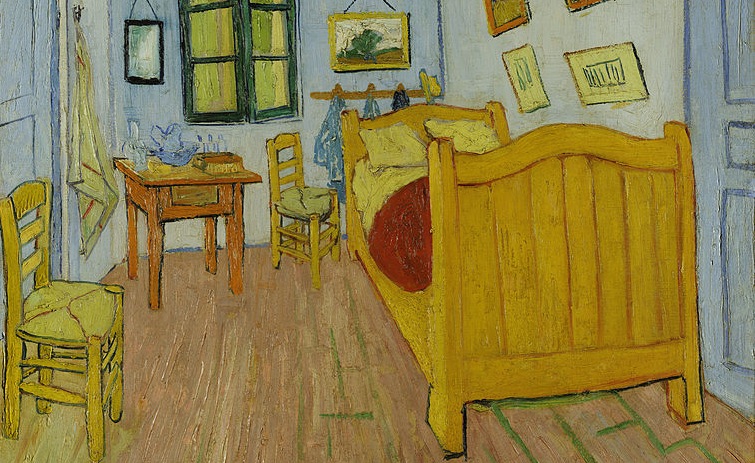
March 10, 2013, by Stephen Mumford
The Original
On the way home from a conference in Utrecht last week I had time to stop off at the Van Gogh Museum in Amsterdam. As far as I could tell, they have the biggest and best collection of Van Gogh paintings anywhere in the world. You can stand right in front of a Sunflowers or Wheatfields, so close that the contours of each brushstroke are visible. And the colours of the original are far better than I’ve seen in any reproduction. They have The Bedroom, for instance, the colours of which are so vibrant compared to the posters on sale in the gift shop that one really has to see the original.
To stand before this original work, which Vincent crafted with his own hands, is to experience so intimately the labours of the man. The brush became an extension of his body and the tiniest of strokes mark his presence and the movement of his hand. Yet we also get a glimpse inside his mind. The work displays his perception of the world and how he sought to represent it. Yet still we don’t know exactly his thinking and what drove him to produce his art so compulsively.
There is also a distasteful mystique around Van Gogh. His madness, the almost true fact that he never sold a painting in his life, and his eventual suicide, seem partially responsible for the object-fetishism over his works and their astronomical market value. Standing before one of his self-portraits, staring into his eyes, one is struck by the brightness and the pleasing image. But to think that this simple painting on canvas, that weighs so little in its plain wooden frame, is worth millions of any currency, it almost defies logic. Why would a society value a picture so much?
Van Gogh’s genius now seems so obvious. He broke with the past, defying classification. Undoubtedly there were influences upon his style, from earlier impressionists and imported Japanese art, but he produced something so novel and different that it was both misunderstood in his lifetime and yet now accepted as some of the greatest art of all time. Originality, that most ethereal and elusive of attributes, existed in Van Gogh’s work. We place a high premium on new ways of thinking. Imitators may be able to produce something that looks similar but what counts is that Van Gogh was the original.
Humanity has constructed skyscrapers that stretch to the heavens, supercomputers that fit in your pocket, bridges and tunnels, and rockets that can reach the outer edge of our solar system. But these simple paintings hanging in Amsterdam are some of the most treasured objects of all. I’m very glad of that. That we revere art above so much else tells me that civilisation still has a hope.

Thank you again for this entry. As mentioned earlier today, on twitter, I find it beautifully written. You shared your experience, but more than that, you give the reader access to this:
“To stand before this original work, which Vincent crafted with his own hands, is to experience so intimately the labours of the man. The brush became an extension of his body and the tiniest of strokes mark his presence and the movement of his hand”
Here is provided a link to the process of creating a work of art (the origin of the work of art, to put it in Heideggerian terms), where the materiality of the brush strokes captured in the paint opens up to life beyond ideas, thoughts, meaning – to presence. This is the beauty of art; and the beauty of your text.
@vigdissj